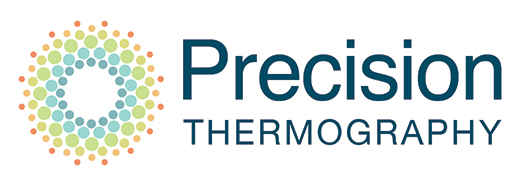RELIEF
There is a Solution for Chronic Pain!
HOW DO WE TREAT IT?
At Vance Medical, we help patients overcome pain – not just mask it with ongoing prescriptions. If you’re dealing with an old injury that never fully healed, we offer therapies designed to repair tissue, even after years of discomfort. And when pain is linked to an autoimmune issue, our alternative treatments work with your body, not against it – without harming your immune system, kidneys, or liver. Keep reading to learn more about our highly effective Pain Elimination Protocol, or PEP.
1. NEURAL REFLEX THERAPY
This gentle, hands-on therapy uses nerve reflexes to calm pain and support healing in a variety of conditions. A very light touch is applied to a tender area, held for about 20–30 seconds. Many patients experience instant relief in each spot, and multiple areas may be addressed during a session. Neural Reflex Therapy works through several mechanisms—some relax muscles immediately, others stimulate acupuncture points or meridians, while some activate the parasympathetic nervous system or calm key nerve centers. Beyond physical pain, it’s also been helpful for anxiety, PTSD, emotional trauma, and more.
2. NEURAL THERAPY
This treatment uses local anesthetics to numb inflamed nerves at the site of pain—like rebooting a malfunctioning computer, once the nerves “reset,” they often start functioning normally again. This reset can help relax the smooth muscle cells in blood vessels, boost circulation, and support the healing process.
First developed in the 1920s, doctors discovered that repeated injections in painful areas could eventually lead to lasting pain relief. Dr. Vance has found this approach especially helpful for easing abdominal discomfort, reducing anxiety and post-traumatic stress, relieving radiating pain, and addressing certain nerve-related symptoms of Lyme or Lyme-like illnesses.
In some cases, injecting anesthetic into scar tissue can also produce remarkable results. Scars may disrupt the body’s natural electrical signaling through the skin, and these targeted injections can restore healthy flow, allowing the body to heal more effectively.
3. NEURAL PROLOTHERAPY
This treatment—also known as Lyftogt’s Perineural Injection Treatment – involves tiny injections of low-dose dextrose just beneath the skin, targeting the nerve fibers responsible for transmitting pain. Rather than numbing the area, the dextrose helps calm these irritated nerves, often stopping pain right at the source. Once the nerves are soothed, blood flow can improve and the body’s natural healing may kick in. Many patients report significant pain relief and improved range of motion in areas that had been stiff or restricted for years.
4. PROLOZONE THERAPY
This non-surgical treatment is designed to repair ligaments and joints – and in many cases, it may offer a permanent solution to chronic pain. It involves injecting a combination of anti-inflammatory compounds, vitamins, oxygen, and very low doses of ozone gas into soft tissues, ligaments, and tendons. These injections support the healing of damaged or weakened connective tissue around the joints, helping to reverse chronic pain by addressing its root cause.
The oxygen and ozone increase circulation and nutrient delivery to the affected areas, prompting the tissue to begin self-repair. Results vary depending on the individual and the severity of the injury, but treatments are typically repeated every 1–2 weeks until optimal improvement is reached. With Prolozone Therapy, there’s a 60–80% chance of achieving lasting pain relief—even in cases where pain has persisted for years.
Ozone is a naturally occurring, highly reactive molecule made up of three oxygen atoms. Its reactivity allows it to stimulate fibroblast and chondroblast activity, which aids tissue regeneration. Thanks to its powerful action and the natural safety of oxygen, ozone makes an ideal healing agent.
5. PEMF (PULSED ELECTRO-MAGNETIC FIELD)
Pulsed Electromagnetic Frequency (PEMF) therapy has been shown to improve circulation and oxygenation, helping to reduce pain and inflammation while supporting healing, recovery, and performance. While many clinics offer PEMF, most use low-intensity devices. At Vance Medical, we use a higher-intensity PEMF system that promotes faster, deeper recovery at the cellular level.
Our system, called the ERT, is based on a design by Nikola Tesla. It produces a cleaner, more refined electromagnetic wave that resonates with the body for faster, more balanced results. What makes ERT unique is that it also emits healing frequencies that work in harmony with the electromagnetic pulse, enhancing the body’s ability to repair itself.
Each session is customized to the patient’s comfort level. At lower settings, sensations may be minimal, while higher settings can produce light muscle contractions as part of the therapeutic effect.
ABOUT LDN
Naltrexone is a medication traditionally used to treat addiction by blocking receptors and preventing the effects of addictive substances. However, researcher Dr. Bihari discovered that using very low doses of naltrexone had additional benefits—such as helping patients with infectious diseases stay well. Today, low-dose naltrexone is used to manage various types of unresolved pain, including fibromyalgia, chronic widespread pain, fatigue, and tenderness. It essentially acts as an anti-inflammatory within the central nervous system.
HOW LDN WORKS
At standard doses, naltrexone blocks the body’s opioid receptors for a full 24 hours. But at very low doses, it only blocks them for about 2 to 4 hours. During that short window, the body responds by producing more endorphins. Once the naltrexone wears off, this increased supply of endorphins becomes available to help reduce chronic pain. Endorphins also play a key role in regulating the immune system, helping the body better fight off infections and disease.
SOME CONDITIONS TREATED
- Complex Regional Pain Syndrome/RSD
- Diabetic Neuropathy
- Cancer
- Migraines
- Lyme
- Covid
- Long Covid
- Fibromyalgia
- Crohn’s disease
- Inflammation
- And more
DISPENSING OF MEDICATION
Because LDN is a lower dose of a standard medication, it requires a prescription from your physician and is formulated at a compounding pharmacy. Each patient has their own particular dose that works best for them; the pharmacist and medical provider will work with you to determine your specific needs and dose.
DOSING AND SIDE EFFECTS
LDN is usually taken at night time just before going to bed, however, occasionally patients take it in the morning. Most people tolerate the medication very well with the only common side effects being:
* Decreased sleep for the first couple of nights. After this, patients often sleep better than they’ve slept in years.
* Vivid dreams but not nightmares. These may or may not go away after a while, but are typically not a concern to patients.

